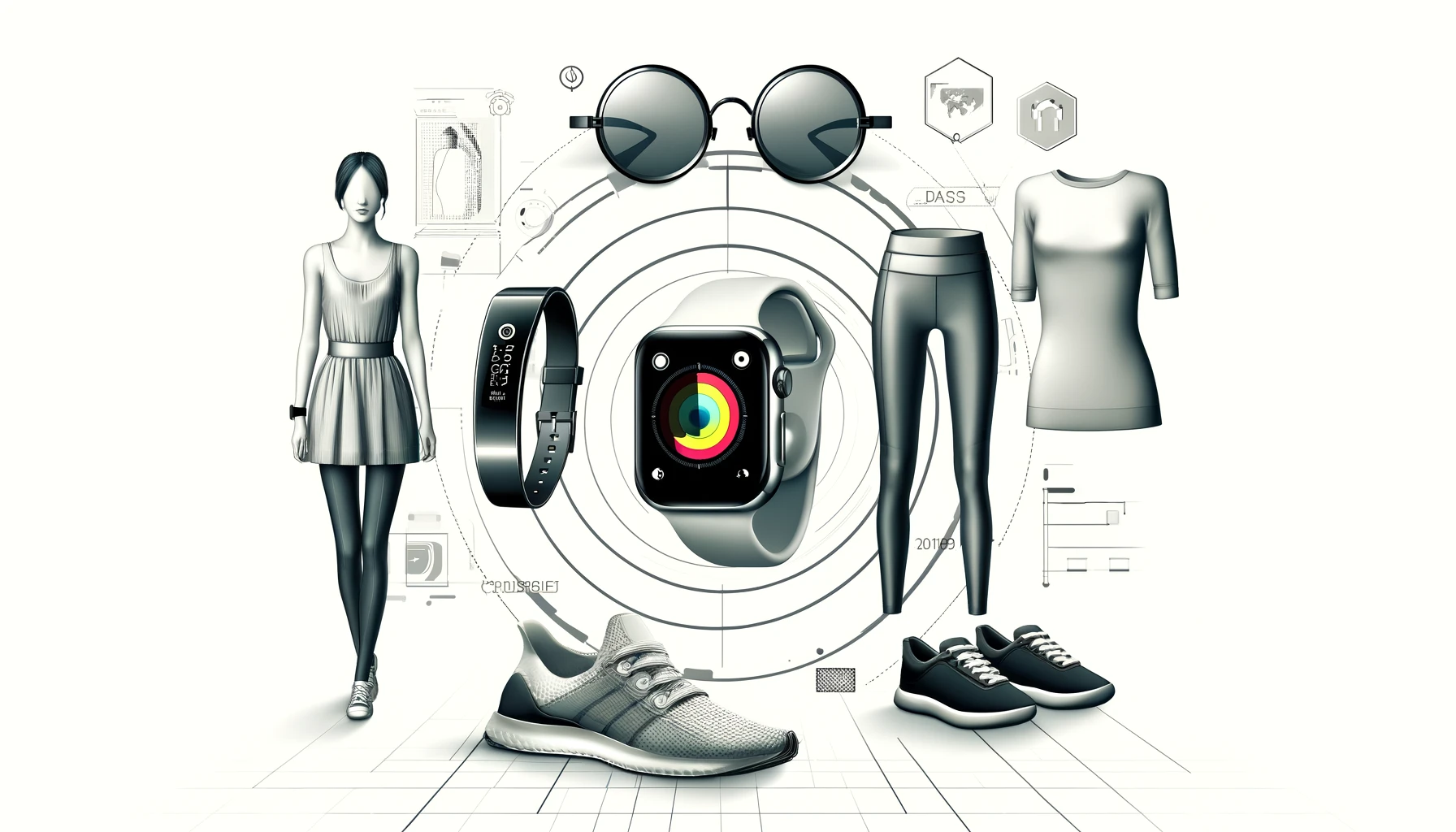Introduction
The fusion of fashion and technology is revolutionizing how we perceive and interact with our clothing. As wearable technology continues to evolve, it is not just about functionality but also about making a style statement. From smartwatches and fitness trackers to augmented reality (AR) glasses and smart fabrics, wearable tech trends are pushing the boundaries of both fashion and innovation. This article explores the latest trends in wearable tech, how they impact the fashion industry, and what the future holds for this dynamic intersection.
II. Evolution of Wearable Technology
Wearable technology has come a long way since its inception. Early examples include the humble wristwatch and hearing aids, which were primarily functional with little focus on style. However, technological advancements and the integration of digital capabilities have significantly transformed wearables.
Early Examples of Wearable Tech Wearable technology initially served simple functions such as timekeeping and health monitoring. The calculator watch from the 1980s and the early versions of fitness trackers in the 2000s were among the first to blend technology with personal accessories (Constantly Thinking) (TechBullion).
Milestones in the Development of Wearable Fashion The 21st century witnessed substantial milestones in wearable tech. The introduction of the Apple Watch in 2015 marked a significant shift, combining advanced functionalities like fitness tracking, communication, and apps in a sleek design (TechBullion). Similarly, Google Glass, though not commercially successful, paved the way for augmented reality wearables (Garmante).
Influence of Technological Advancements on Fashion Technological advancements have revolutionized wearable tech by incorporating miniaturized sensors, improved battery life, and enhanced connectivity. These innovations have enabled the creation of stylish yet functional wearables, such as smart fabrics that can monitor health metrics and AR glasses that provide immersive experiences (Pyrilia) (Fashinnovation).
III. Current Trends in Wearable Tech
The wearable tech landscape is continuously evolving, with innovations that blend style, functionality, and advanced technology. Here are some of the most notable trends currently shaping the industry:
Smartwatches and Fitness Trackers Smartwatches and fitness trackers remain at the forefront of wearable technology. Devices like the Apple Watch and Fitbit Versa are not only popular for their health monitoring capabilities but also for their sleek designs and customizable features. These gadgets track various health metrics such as heart rate, steps, sleep patterns, and even stress levels, providing users with valuable insights into their overall well-being (TechBullion) (TechBullion).

Fashion-Forward Smart Clothing Smart clothing is gaining traction, integrating technology directly into fabrics. Innovations such as Google’s Jacquard technology, used in Levi’s Commuter Trucker Jacket, allow wearers to control their smartphones via gestures woven into the fabric. Additionally, brands are developing garments embedded with biometric sensors that can monitor vital signs, adjust temperature, and enhance athletic performance (Constantly Thinking) (DebraBernier).
Augmented Reality (AR) Glasses and Accessories AR glasses and accessories are revolutionizing the way we interact with the digital world. Devices like the Vuzix Blade and Microsoft’s HoloLens offer immersive experiences by overlaying digital information onto the real world. These technologies are being used in various applications, from virtual try-ons in retail to real-time translations and navigation aids (Garmante) (Pyrilia).
Health-Monitoring Wearables Health-monitoring wearables are becoming increasingly sophisticated. Beyond fitness trackers, there are now wearable ECG monitors, glucose monitors, and devices that can detect sleep apnea. These health-focused wearables are particularly valuable for managing chronic conditions and providing continuous health data to both users and healthcare providers (DebraBernier) (TechBullion).
Sustainability in Wearable Tech Sustainability is a growing concern in the fashion industry, and wearable tech is no exception. Designers are incorporating eco-friendly materials and practices, such as recycled fabrics and solar-powered accessories. These innovations not only reduce environmental impact but also align with the increasing consumer demand for sustainable products (BOLD Awards) (TechBullion).
IV. Impact on the Fashion Industry
The integration of technology with fashion is having a profound impact on the industry, influencing everything from design and manufacturing to consumer behavior and market trends.
Collaboration Between Tech Companies and Fashion Brands Collaborations between tech companies and fashion brands are becoming increasingly common. High-profile partnerships, such as those between Google and Levi’s, or Apple and Nike, highlight the potential for innovative wearable tech products that combine functionality with style. These collaborations bring together the best of both worlds, resulting in products that appeal to tech enthusiasts and fashion-conscious consumers alike (Constantly Thinking) (DebraBernier).
Influence on Fashion Design and Aesthetics Wearable technology is driving new trends in fashion design and aesthetics. Designers are now incorporating tech elements into their collections, such as LED lights, smart fabrics, and 3D printing. This fusion of technology and fashion allows for more creativity and innovation, leading to unique and futuristic designs. For example, LED dresses that change color or patterns in response to music or movement are becoming popular on runways (L’Officiel IBIZA) (Yellowbrick).
Consumer Behavior and Market Trends The rise of wearable tech has significantly influenced consumer behavior and market trends. Consumers are increasingly looking for products that offer both style and functionality. The demand for smartwatches, fitness trackers, and AR glasses reflects a growing interest in health monitoring and immersive experiences. Additionally, the ability to personalize and customize wearable tech products is appealing to consumers who value individuality and unique style (TechBullion) (TechBullion).
Sustainability and Ethical Practices Sustainability is a major concern in the fashion industry, and wearable tech is contributing to more ethical practices. Brands are exploring the use of eco-friendly materials and production methods, such as recycled fabrics and solar-powered devices. Moreover, blockchain technology is being used to enhance transparency in the supply chain, ensuring that products are ethically sourced and manufactured. This not only meets the growing consumer demand for sustainable products but also promotes a more responsible and ethical fashion industry (Fashinnovation) (BOLD Awards).
Digital Transformation of Fashion Retail The retail experience is also being transformed by wearable tech. Augmented reality (AR) and virtual reality (VR) technologies are creating immersive shopping experiences, allowing customers to virtually try on clothes and accessories before making a purchase. This not only enhances the shopping experience but also reduces return rates, contributing to a more efficient and sustainable retail ecosystem (Yellowbrick) (Pyrilia).
V. Future Prospects
The future of wearable technology in fashion looks incredibly promising, with numerous innovations on the horizon that could redefine the way we interact with clothing and accessories. Here are some potential future developments in this exciting field:

Innovations on the Horizon The wearable tech industry is poised for several groundbreaking innovations. Advances in artificial intelligence (AI), quantum computing, and biotechnology suggest that future wearable devices will be even more sophisticated and integrated into our daily lives. For instance, AI could lead to more personalized and adaptive wearables that learn from user behavior to provide more tailored experiences (Fashinnovation) (L’Officiel IBIZA). Quantum computing could revolutionize data processing capabilities in wearables, making them faster and more efficient.
Potential Challenges and Solutions Despite the exciting prospects, there are challenges to be addressed. Privacy concerns are paramount, as wearable devices collect vast amounts of personal data. Ensuring robust data security measures will be crucial to gain consumer trust. Additionally, the high cost of advanced wearable tech may limit accessibility for some consumers. Developing affordable yet high-quality wearable tech will be essential for widespread adoption (Garmante) (TechBullion).
Predictions for the Next Decade Over the next decade, we can expect wearable technology to become even more seamlessly integrated into our lives. Wearable tech will likely evolve from standalone devices to interconnected systems that work harmoniously within the Internet of Things (IoT). Innovations such as smart fabrics that can change properties based on environmental conditions, or wearables that can detect and respond to health issues in real-time, are on the horizon (DebraBernier) (BOLD Awards).
Furthermore, the fashion industry is expected to see an increase in sustainable and eco-friendly wearable tech solutions. Advances in recycling techniques and the development of biodegradable materials will play a significant role in reducing the environmental impact of wearable devices (TechBullion) (BOLD Awards).
Impact on Lifestyle and Society The integration of wearable technology into everyday life will have profound implications for lifestyle and society. Wearables will enhance personal health management, enable more efficient work and communication, and provide immersive experiences in entertainment and education. As these technologies become more sophisticated and widespread, they will likely drive significant changes in how we live, work, and interact with the world around us (Pyrilia) (Constantly Thinking).
VI. Conclusion
The intersection of fashion and technology has opened up a world of possibilities, transforming how we create, consume, and experience fashion. From the early days of basic wearables to today’s sophisticated smartwatches and smart clothing, wearable tech continues to evolve, blending style with advanced functionality.
Current trends such as smartwatches, fitness trackers, AR glasses, and health-monitoring wearables demonstrate the incredible potential of wearable technology to enhance our daily lives. The fashion industry’s embrace of technology is evident in collaborations between tech companies and fashion brands, driving innovative designs and new consumer experiences.
Looking forward, the future of wearable tech promises even more exciting advancements. Innovations in AI, quantum computing, and biotechnology will likely lead to more personalized, efficient, and sustainable wearable devices. Despite potential challenges like privacy concerns and cost barriers, the industry is set to overcome these hurdles through continued innovation and commitment to ethical practices.
As wearable technology becomes more integrated into our lives, it will undoubtedly shape the future of fashion and redefine our relationship with clothing and accessories. This ongoing synergy between fashion and technology not only enhances our lifestyles but also pushes the boundaries of creativity and functionality in fashion design.
FAQs
1. What is wearable technology? Wearable technology refers to electronic devices that are worn on the body, either as accessories or embedded in clothing, which often include advanced functionalities such as health monitoring, connectivity, and fitness tracking. Examples include smartwatches, fitness trackers, AR glasses, and smart clothing (Constantly Thinking) (TechBullion).
2. How is wearable tech impacting the fashion industry? Wearable tech is significantly influencing the fashion industry by introducing innovative designs that blend functionality with style. Collaborations between tech companies and fashion brands have led to the creation of products like smart clothing and AR glasses. Additionally, wearable tech is driving trends in sustainability and personalized fashion experiences (Fashinnovation) (Garmante).
3. What are the current trends in wearable tech? Current trends in wearable tech include smartwatches, fitness trackers, fashion-forward smart clothing, AR glasses, and health-monitoring devices. These technologies offer a range of functionalities from health monitoring and fitness tracking to immersive augmented reality experiences and personalized fashion choices (DebraBernier) (TechBullion).
4. What does the future hold for wearable technology in fashion? The future of wearable technology in fashion looks promising with anticipated advancements in AI, quantum computing, and biotechnology. Future wearables are expected to be more integrated, personalized, and sustainable. Innovations such as smart fabrics, AI-driven personalization, and eco-friendly materials will likely play a significant role in the next decade (BOLD Awards) (TechBullion).
